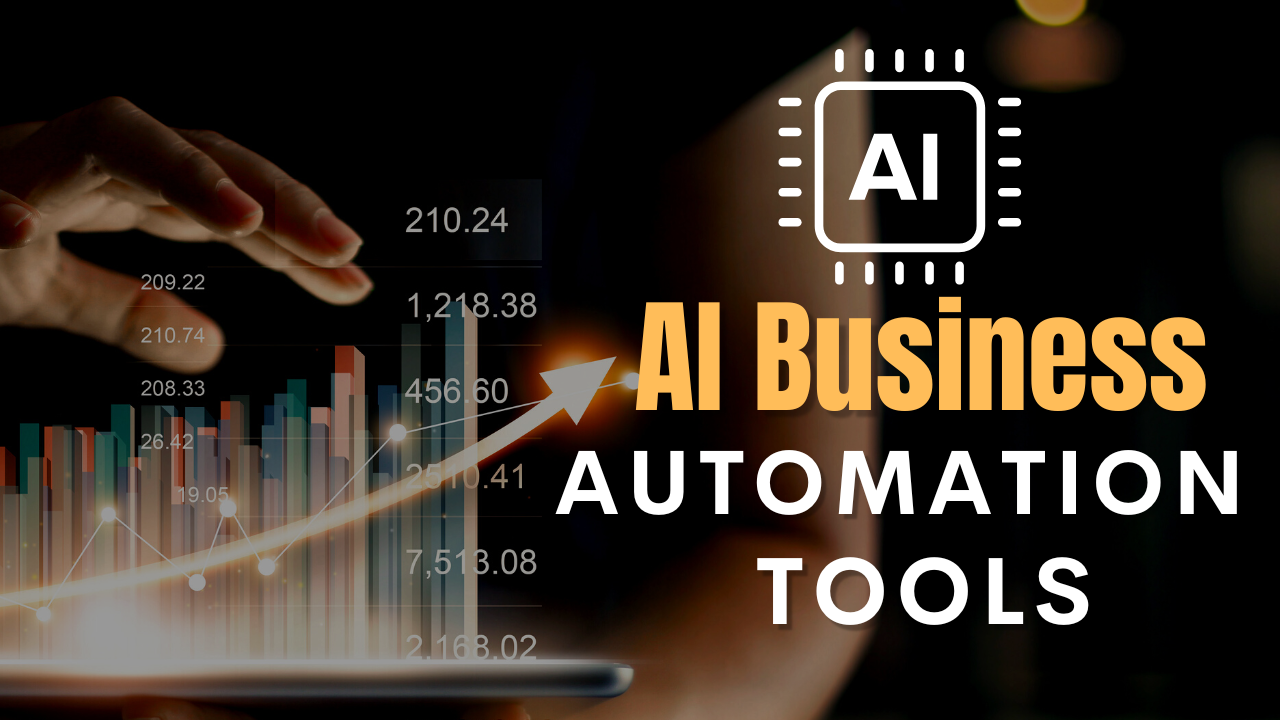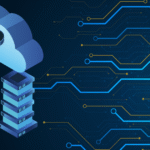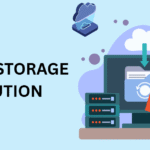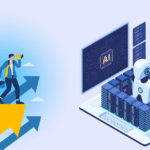Picture standing on top of all those tasks, emails classified, and reports prepared by the end of your workday, and with a sparkling forehead. This isn’t science fiction anymore. One of the key changes to has revolutionized how we all work has been the introduction of AI task automation, which can often turn hours of manual time into mere minutes of automated efficiency.
Whether you’re a busy professional, small business owner, or similar, it can save your time to be spent on more valuable activities through ‘AI Automation Tools’. This post serves as a complete guide for using artificial intelligence to make tasks easier to automate in all scenarios, from simple email deliveries to complex data analysis.
The Significance of AI Task Automation Today
Things are moving faster than ever in the modern workplace. It is no secret that professionals work themselves to the bone with hours on end of nerve-wracking and energy-draining redundant tasks. Studies have shown that knowledge workers spend as much as 41 percent of their time on tasks that could be automated or outsourced.
To be clear, AI automation isn’t going to replace human creativity; instead the technology will free you up to focus on what matters most. By having machines do the heavy lifting of routine work, you are free to focus on strategy, critical thinking and creative problem solving.
The Actual Advantages of AI Automation
Benefits of AI Task Automation (more than a time saver):
Efficiency: If used to automate processes, AI and ML work 24/7 — no sick days or lunch breaks needed, and able to complete tasks in a matter of minutes rather than hours.
Low Error Rate: With the ability to automate data entry, calculations and routine processes frees up time and releases humans from error-prone activities.
Cost Effective: Less requirement for the extra staff, hence improves overall productivity.
Consistency: Automated tasks work the same way with each execution which provides consistent results.
Scalability: AI systems can take on increased workloads without an equivalent rise in time or resources.
Introduction to AI Automation: How to Get Started
AI Automation doesn’t mean studying computer science. Start with some basic and high-impact tasks and as you feel comfortable, build out your automation toolbox.
Identify Your Automation Opportunities
Step 1: Have a look at your daily tasks first of all before you get into tools. Look for activities that are:
- Repetitive and predictable
- Time-consuming but not complex
- Rule-based with clear decision points
- Data dense, with a good deal of copy-and-pasting
Some common choices are email maintenance, social media posting of the same content daily, manual data entry, scheduling appointments and generating reports.
Choose Your Automation Strategy
There are three primary ways in which AI task automation is managed:
No-Code Solutions: Any web platform that does not require any programming knowledge on the users part.
Low-Code Platforms: These are tools that come with a drag-and-drop interface and the least amount of coding effort.
Custom Automation: Built by your own developers.
No-code solutions provide immediate results with near-zero learning curve, beginners and intermediates should always start here.
Various AI Automation Tools for Important Tasks
Email and Communication Automation
Inbox management takes a significant chunk of most people’s days. And AI is able to turn this time waste into a powerful, automated system.
Smart Email Sorting and Filtering
SaneBox and Clean Email are two such tools that leverage AI to organize incoming messages in helpful buckets. Based on your actions, they slowly learn which mails are important and separate these from all your newsletter subscriptions, promotional content and the rest.
Automated Email Responses
They draft replies based on the content of the incoming emails and your communication style, with you coaching them to send when they feel right. Boomerang is one of a new wave of startups that offer smart reply suggestions and can even schedule your emails for later times (just like Boomerang or Mixmax).
Meeting Scheduling Made Simple
Calendly and Acuity Scheduling get rid of the ping-pong of planning out a meeting. Such tools are synced with your calendar and allow others to book appointments on their own while still falling in line with the time slots you opened up and any constraints you impose.
Content Creation and Marketing Automation
You do not have to sit and write in front of a blank sheet of paper. Why AI Writing Tools are paramount in 2021?
Social Media Management
Hootsuite and Buffer, as an example of this, will use AI to determine the best times for you to post, suggest similar articles that may interest your followers and analyze responses or engagement patterns online. Automating posts in any way possible, such as posting to more than one social network or scheduling for efficiency based on audience activity.
Content Generation and Editing
These AI writing assistants are able to create posts, captions and marketing copy for blog posts, social media etc. Tools like Jasper and Copy.ai write content that the user can generate, while Grammarly is an AI-powered writing assistant.
Visual Content Creation
With Canva, there is an array of AI and machine learning features that eliminates the need to design from scratch using its ability to select layout templates automatically, suggest color palettes as well as make complete designs based on your written descriptions. Runway and Midjourney are tools like that, takes your input and create a professional level of images, videos etc.
Data Management and Analysis
As data-related work is largely characterized by pattern recognition and systematic processing, it should have been an AI premise.
Automated Data Entry
OCR (Optical Character Recognition) allows you to extract text from images and PDFs, which is invaluable for data entry into spreadsheets or databases automatically. Using services such as Microsoft AI Builder and Google Document AI, I can get my invoices, receipts, and forms to be processed without the need for any manual input at all.
Smart Spreadsheet Management
AI in modern spreadsheet applications can help you automatically detect patterns or problems, suggest formulas to address these issues and generate various types of charts for representations. The Explore feature in Google Sheets and the Ideas tool in Microsoft Excel can automatically highlight insights and create visualizations.
Business Intelligence Automation
Intelligence of such tools help in automatic generation of reports and identifying trends, interactive dashboards made through these AI-powered tools like Tableau or Power BI. They gather data from multiple platforms and, through display in various forms that are more digestible, offer insights.
Top AI Automation Platforms/Tools
Zapier: Automation Swiss Army Knife
Zapier is an online automation tool that allows you to connect your favorite apps and pass data effortlessly between hundreds of web services — like Salesforce, MailChimp, Slack, Google Sheets etc and can create automated workflows called ZAPs. You can save email attachments to cloud storage, create calendar events from form submissions, or post social media updates across multiple platforms.
Key Features:
- No coding required
- Extensive app integrations
- Conditional logic and multi-step workflows
- Built-in AI text processing tools
Microsoft Power Automate: Enterprise-Grade Solutions
Power Automate is an automation tool for businesses integrated into Microsoft ecosystem. Help you automate processes throughout Office 365, Dynamics 365, and hundreds of other third-party applications.
Key Features:
- Desktop automation (RPA)
- AI Builder for custom models
- Approval workflows
- Integration with Microsoft ecosystem
IFTTT: Simple Trigger-Based Automation
IFTTT (If This Then That) — Simple trigger-based workflows. Simple Home Automation with IFTTT — Not as advanced as Zapier but perfect for basic automation and smart home integration.
Key Features:
- User-friendly interface
- Smart home integration
- Mobile app automation
- Free tier available
Make (Formerly Integromat): Visual Automation Builder
Offers automation with a visual twist where users can create workflows using flow chart-like approach. It is especially powerful when dealing with data transformation and intricate routing scenarios.
Key Features:
- Visual workflow designer
- Advanced data processing
- Error handling and debugging tools
- Extensive API support
Step-by-Step Guide for Creating Your First AI Automation
Read on to see how to implement a useful automation here — saving email attachments to cloud storage and additionally notifying your team when an important attachment is received.
Step 1: Define Automation Target
Goal: Automatically download invoice attachments from email, save it to Google Drive and notify accounting team via Slack.
Trigger: New email with attachment in Gmail
Actions:
- Save the attachment to Google Drive in a specific folder
- Send notification to Slack channel
- Mark email as processed
Step 2: Set Up Your Automation Platform
In this case, we use Zapier:
- Create a Zapier account
- Click “Create Zap”
- Add Gmail as your trigger app
- Select “New Attachment” event as the trigger action
Step 3: Set the Trigger
- Connect your Gmail account
- Select the label, e.g., “Invoices” or “AttachmentMonitor”
- Set the filter for certain types of emails, contains “invoice,” etc.
- Test the trigger with a sample email with an attachment
- Confirm that Zapier recognizes this email
Step 4: Add First Action
Integration with Google Drive:
- The action app is Google Drive
- Select action type “Upload File”
- Map the email attachment to the file input
- Choose the folder for saving
Step 5: Add Additional Actions
Send Slack Notification:
- Add another action step
- Choose Slack as the app
- Select “Send Channel Message” action
- Fill in the template with the message about the saved file
Step 6: Test and Activate
- Run a test with sample data
- Check if the files are saved properly
- Verify Slack notification
- Activate the process
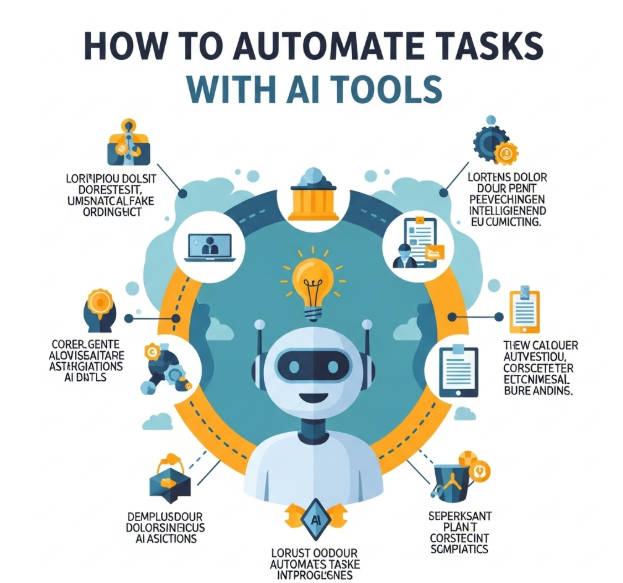
Advanced Integration with AI
Conditional Logic and Smart Routing
Highly integrated automation makes choices based on content as well as data. E.g., prioritize work in the queue based on the deadline and importance, or the contents of an email’s subject line.
Multi-Step Workflows
Due to complex business process automation, workflows must have many connected steps. The automation used today connects parallel computing, conditional branches. E.g., When a lead fills out a contact form, an AI model assigns a score based on company size and industry; high-scoring leads get immediately notified to a sales representative. Medium quality leads enter an intensive email campaign. Lower quality leads get subscribed to the monthly newsletter.
Advanced AI Features
Smart Automation Features:
- Sentiment Analysis: It routes negative customer feedback to priority support queues which is done automatically
- Categorizing: Ensure that your content remains sorted by topics or urgency
- Predictive Scheduling: Optimizes your meeting times based on availability patterns
Industry-Specific Automation Examples
E-commerce Business Automation
Order Processing Pipeline:
- Customer places order
- Automatically updated inventory tracking
- If in stock: Payments → Fulfillment
- If not in stock: automated backorder notification sent to customer
- Shipping notifications sent automatically
- Follow-up review requests scheduled
Key Tools: Shopify Flow, WooCommerce Automation, OrderDesk
Real Estate Professional Automation
Lead Management System:
- Visitor enters property inquiry form on website
- Leads automatically created in your CRM
- Automated email with listing info & pics
- Sequence activated according to type of request
- Showing appointments automatically scheduled
- Post-showing feedback forms sent
Key Tools: Chili Piper, HubSpot, Calendly, DocuSign
Healthcare Practice Automation
Patient Communication Workflow:
- Appointments scheduled in Practice Management System (PMS)
- SMS and email appointment alerts are sent automatically
- Pre-appointment forms automatically distributed
- Post-appointment follow-up surveys triggered
- Insurance verification automated
- Billing processes streamlined
Key Tools: SimplePractice, Kareo, Appointment Reminder, PatientPing
Overcoming Common Automation Challenges
Data Quality and Consistency Issues
Problem: Automated workflows can be broken because data formats are fragmented, and instead of fitting into a standard can lead to corruption.
Solution:
- Implement data validation rules
- Standardize formats with text processing tools
- Design fallbacks for corner cases
- Regular data auditing and cleaning
Integration Limitations
Problem: Not all apps integrate well.
Solution:
- Evaluate tools for integration capabilities a priori
- Use middleware platforms for complex connections
- Choose API-first tools for maximum flexibility
- Plan for manual backup processes
Change Management and User Adoption
Challenge: Employees may resist automation.
Solution:
- Start with simple, high-value automation
- Provide training and support
- Highlight time savings and benefits
- Involve the team in automation planning
Success Metrics for AI Automation

Time Savings Calculation
Keep a record of how long every manual step takes vs. an automation alternative. Identify expected time savings (direct) and benefits like reduced errors and improved consistency across the board (indirect).
Measurement Framework:
- Before: Time per task × frequency = total time spent
- After: Setup time + maintenance time = automation cost
- ROI: (Time saved – automation cost) / automation cost × 100
Error Reduction Metrics
Record the automation implementation error rates. It covers both blatant errors and minor nuances that automation weeds out.
Productivity Indicators
Track overall productivity and quality enhancements. Look for increases in:
- Tasks completed per day
- Revenue per employee hour
- Customer satisfaction scores
- Team capacity for strategic work
Future-Proofing Your Automation Strategy
Staying Current with AI Developments
The AI automation space is fast-moving. There are continuously new tools, features, and capabilities coming out. Stay informed through:
- Industry newsletters and blogs
- Automation community forums
- Vendor webinars and training sessions
- New feature beta testing programs
Building Scalable Automation Infrastructure
Not only should you make your automation strategy modular, it should be designed to grow with your business.
Modular and Combineable: Build components that serve as automation building blocks which are reusable for different processes.
Documentation Standards: Create and organize clear documentation for all automated workflows, such as troubleshooting guides.
Access Control: Ensure that permissions are set up properly, and backups are made.
Regular Reviews: Set up regular audits of your automation to find opportunities for optimization.
Security and Compliance Considerations
Data Protection in Automated Systems
Many times automated processes include sensitive information. Implement appropriate security measures:
- Use encrypted connections for integrations
- Make use of access control and user rights management
- Conduct regular security reviews of connected apps
- Comply with data protection (GDPR) requirements
Backup and Recovery Planning
When automation fails, it can result in business process disruptions. Prepare for potential issues:
- Document how to perform critical processes manually
- Implement monitoring and alert systems
- Create backup automation workflows
- Routine testing of disaster recovery processes
Next Steps: Start Your AI Automation Journey
Your AI automation journey need not turn your existing workflows entirely on their head. Begin with these practical steps:
Week 1: Assessment and Planning
- List your top 10 most time-consuming repetitive tasks
- Research automation tools relevant to you
- Create accounts on two to three automation platforms
- Start with free tiers for testing capabilities
Week 2-3: First Automation Implementation
- Identify one low-hanging fruit to automate
- Build your first workflow with step-by-step tutorials
- Test thoroughly with sample data
- Monitor performance & optimize as necessary
Month 2: Expansion and Optimization
- Add 2-3 additional automated workflows
- Combine different tools for more complex processes
- Train staff on new automated systems
- Document all workflows and procedures
Month 3+: Advanced Implementation
- Add conditional logic and intelligent routing
- Explore AI-powered decision-making features
- Track your ROI and success metrics
- Plan for scale and future automation opportunities
Transform Your Productivity Today
One of the largest productivity advancements of our time is AI task automation. With everything discussed in this guide, you can gain extra hours in your day while also being more efficient and consistent with these strategies and tools.
Success with automation is starting small and thinking long term, then iterating your processes. You cannot automate all the things at once, but focus on high impact tasks first that will give you value right away.
Keep in mind, the objective is not to get rid of human aspects altogether but to liberate yourself from monotonous processes and have time for innovative brainstorming, strategic planning and significant tasks where you need your human insight and thought process.
The future is one that marries human intelligence with the efficiency and speed of AI. So take the first step into automation now and discover how working smarter, not harder can benefit your productivity as well as your professional satisfaction.
The real question is not can you afford to automate using AI, but instead, can you afford not to?
FAQ
1. What is the significance of AI task automation today?
Studies show knowledge workers spend up to 41% of their time on tasks that could be automated. AI automation reduces this burden by handling routine, repetitive work. This allows professionals to focus on strategy, problem-solving, and creativity.
2. What are the actual advantages of AI automation?
AI works continuously without breaks, providing efficiency and speed. It reduces errors, lowers costs, ensures consistency, and scales easily. These benefits make it more than just a time saver.
3. How do I identify automation opportunities?
Look for tasks that are repetitive, predictable, time-consuming, and rule-based. Data-heavy activities with lots of copy-pasting are strong candidates. Examples include email maintenance, scheduling, data entry, and report generation.
4. What are the main automation strategies available?
There are three options: no-code solutions, low-code platforms, and custom automation. No-code platforms are easiest for beginners and require no programming. Custom automation is built by developers for advanced needs.
5. Which AI tools help with email and communication automation?
SaneBox and Clean Email organize incoming messages. Boomerang and Mixmax create smart replies and schedule emails. Calendly and Acuity Scheduling simplify meeting planning.
